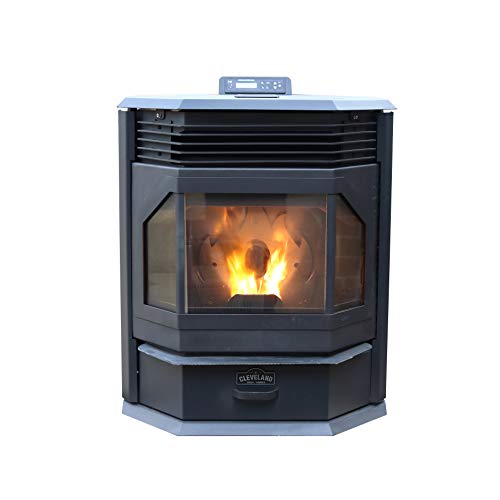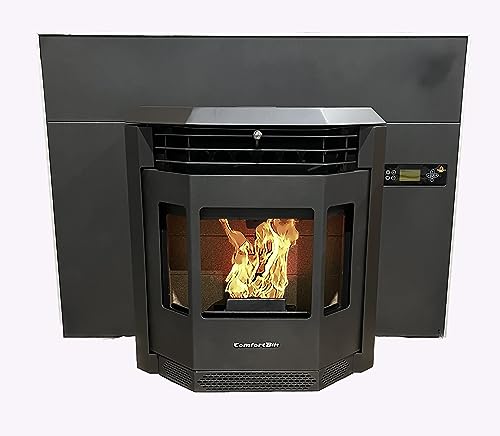 Pellet Stove Furnace
Pellet Stove Furnace
Pellet stoves can be purchased as freestanding units or fireplace inserts that give your home the look of a traditional
wood pellet stove-burning fireplace. These stoves are available in freestanding models or as fireplace inserts. They can provide the appearance of an old-fashioned wood-burning fireplace.
The auger moves pellets from the hopper into the combustion chamber where they are burned and produce heat. Sensors monitor the flame and can adjust the speed of operation in order to maintain a desired temperature in the room.
1. Energy Efficiency
Pellet stoves make use of a renewable,
non electric pellet stove-toxic fuel made of compressed sawdust and other substances. These are usually put in landfills, but can be used to provide a clean, efficient source of heat. As a result, they help homeowners lower their energy consumption and reduce greenhouse gas emissions. Many pellet stove users report that they can recoup their initial investment in just a few short years through a reduction in their heating bills.
Pellets are much more dense and compressed than natural wood, making them more efficient for burning. They also produce less creosote buildup than traditional fireplaces made of wood. They are also packaged in plastic bags that seal out moisture and require less frequent cleaning.
miniature pellet stove stoves, like other heating systems, must be properly sized and vented. A skilled technician can assess your venting requirements and space to ensure the most efficient results.
In the process of installation, a hearth will be constructed according to your specifications, and the vent is installed through an opening that is cut into the exterior of your home. The vent can be run through a sidewall or a roof depending on your preference and the local laws.
After the hearth and vent are complete then the pellet stove can be plugged in and turned on. Some manufacturers provide an electronic remote control that makes it simple to begin and keep the fire going, while other manufacturers offer additional sensors that monitor airflow and combustion flue temperatures, as well as pressure. When the system detects it requires more or fewer pellets, it tells the auger to speed up or slow down according to the situation.
All stoves have a hopper for storage that holds from 35 to 130 pounds of pellets until they're needed. The size of the hopper determines the frequency at which you have to refill your stove. Larger hoppers permit longer periods before a refill is required. A grille pulls fresh air from the room and passes it over a heat exchanger, which then blasts heated air into the living space through convection. A grate or auger distributes the pellets, while an under-sink pan will collect any unburnt ones as well as the ashes of combustion.
Although
pellet stoves modern stoves are more efficient than wood-burning stoves, they're not as efficient as natural gas furnaces or electricity-powered heaters. Electric components that drive motorized components of stoves require an electrical supply. This could be an issue in the event of a power outage, but backup systems such as batteries and generators are available.
2. Low Maintenance
Pellet stoves are extremely efficient, but like any major heating appliance they require a bit of maintenance to keep them running correctly. Cleaning your stove and exhaust vent on a regular basis will stop the accumulation of dangerous creosote that could lead to a fire or an explosion that can damage the stove and/or your home.
A pellet stove burns compressed natural wood particles or other materials (like nutshells, corn kernels or small pieces of scrap wood). An electric-powered auger is used to feed the fuel pellets from a container into the burner and into the combustion chamber. The thermostat you choose controls the speed at which pellets are fed to the burner. The fire can continue to roar, or it can be decreased or even extinguished according to the temperature you set. When the fire goes out the ash is then thrown into an empty ash tin beneath the burner that can be easily removed and disposed.
Pellets are made from the waste products of lumber processing that would otherwise be discarded. They are a renewable resource and emit significantly less particles into the air than traditional wood-burning stoves, which results in a clean burning heat source. The amount of carbon monoxide, carcinogens and other harmful chemicals released from pellet stoves is much lower than the newer EPA certified wood stoves.
They are not required to be vented through a chimney, like is the case with traditional wood stoves. Instead, they can be vented through a wall, or any other exterior structure. Pellet stoves are equipped with flue ports on the rear or top of the appliance. They are connected to a ventpipe which extends out the house.
A pellet stove has one disadvantage that you must purchase or store enough fuel pellets to last the whole winter season. On average, owners of pellet stoves use three tons of pellets throughout the course of winter season at a cost of $200 per ton. The costs can increase over time, but it is cheaper than purchasing and hauling firewood for a traditional wood-burning fireplace or stove. Make sure you buy enough pellets to ensure your stove can function through the coldest winter months, and that you have a suitable location to store them (preferably dry, cool and off the ground).
3. Reduce carbon footprint
Pellet stoves utilize renewable biomass fuel to create heat, thus reducing the dependence on finite fossil fuels. This reduces the carbon footprint and also helps diversify energy sources in homes.
Even the newest woodstoves that are EPA certified emit considerably less carbon dioxide than pellet stoves. The emissions of pellet stoves are also lower than those from gas furnaces. Pellets are made from wood, sawdust and other lumber leftovers and may also contain various other substances like soybeans, corn as well as nutshells, cherries pits, and agricultural waste. When they are burned, they release less particles, which can cause respiratory problems and allergies, carcinogens and nitrous dioxide.
The major difference between the wood stove and the pellet stove is the feed system. Pellet stoves have hoppers that contain the pellets. When the thermostat or sensors signal that the room requires heating, the furnace turns. The pellets are fed into the combustion chamber and burn to generate heat. The air from combustion chamber is passed through a heat-exchanger, which transfers heat to the blower. This process creates very low emissions, and creosote is not produced.
When the hopper is empty, a cyclone action takes away the ash and puts it in an ash pan. The stove also features a fan to circulate the clean, heated air into the living room. Most
pellet stoves are designed to run with minimal maintenance and come with a large view space for you and your family to take in the flames.
The quality of pellets is the main factor that affects the emissions from pellet stoves. Poor-quality pellets will produce more emissions. When choosing your pellets, ensure that they are certified to meet certain standards and do not contain other ingredients such as urea or petroleum products. Choose a company with a warranty and will repair or replace parts in the event of a malfunction. Certain states provide homeowners with an incentive to pay taxes in the event that they decide to go greener. This is a great opportunity to help offset the initial cost of this type of stove and make it easier to install.
4. Reduced Noise
Pellet stoves emit very little smoke and exhaust in comparison to fireplaces that burn wood. They also utilize an electric fan to distribute heat more evenly across the space. This is a major reason pellet stoves need less maintenance than wood stoves. While wood stoves must be frequently cleaned of dust and chemicals pellet stoves need the use of a special metal vacuum cleaner for regular cleaning.
Many manufacturers have made a conscious effort to design their stoves to be simple to install and to operate as well as maintain. They are available in different styles to complement the design of your home. Some even include a programmable thermostat and remote control as well as a WIFI app so you can monitor and manage your stove from anywhere in the world.
Most pellet stoves have an enormous fuel hopper that can hold between 35 and 130 pounds of pellets. The pellets are then fed into the combustion chamber via an auger. The heat output and the degree to which the fire is will depend on the speed at which pellets are fed to the burner. The hopper can either be filled with hardwood pellets, made from wood with a dense structure like hickory and oak, or softwood pellets. Many stoves are able to use biomass pellets made of switchgrass and corn. This is an environmentally friendly alternative.
Because pellet stoves burn such as a clean fuel, they generate less smoke than traditional wood-burning fireplaces and require less maintenance. They don't require chimneys, making them the best option for retrofits or new construction.
Pellet stoves do not require regular cleaning of creosote or other chemicals like wood stoves. They just require periodic inspections to ensure proper operation and maintenance. Based on the model, this could include a regular inspection and cleaning of the accumulation of Ash or "clinker," as well as the fan and motor. Your appliance dealer can explain the proper procedure for your specific brand and model. They can also provide details about storage and safety and help you find the right fuel for your stove.

 Pellet Stove Furnace
Pellet Stove Furnace Pellet stoves can be purchased as freestanding units or fireplace inserts that give your home the look of a traditional wood pellet stove-burning fireplace. These stoves are available in freestanding models or as fireplace inserts. They can provide the appearance of an old-fashioned wood-burning fireplace.
Pellet stoves can be purchased as freestanding units or fireplace inserts that give your home the look of a traditional wood pellet stove-burning fireplace. These stoves are available in freestanding models or as fireplace inserts. They can provide the appearance of an old-fashioned wood-burning fireplace.